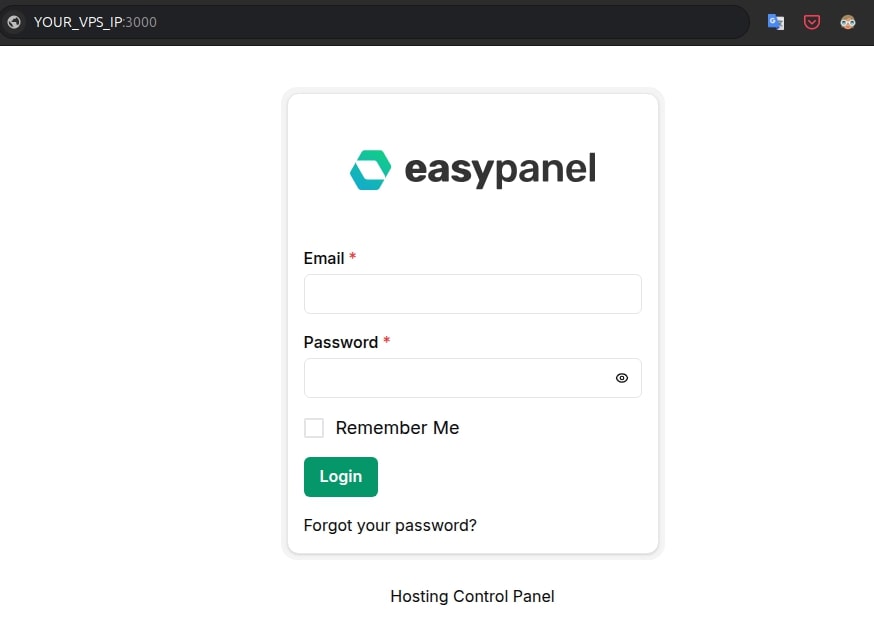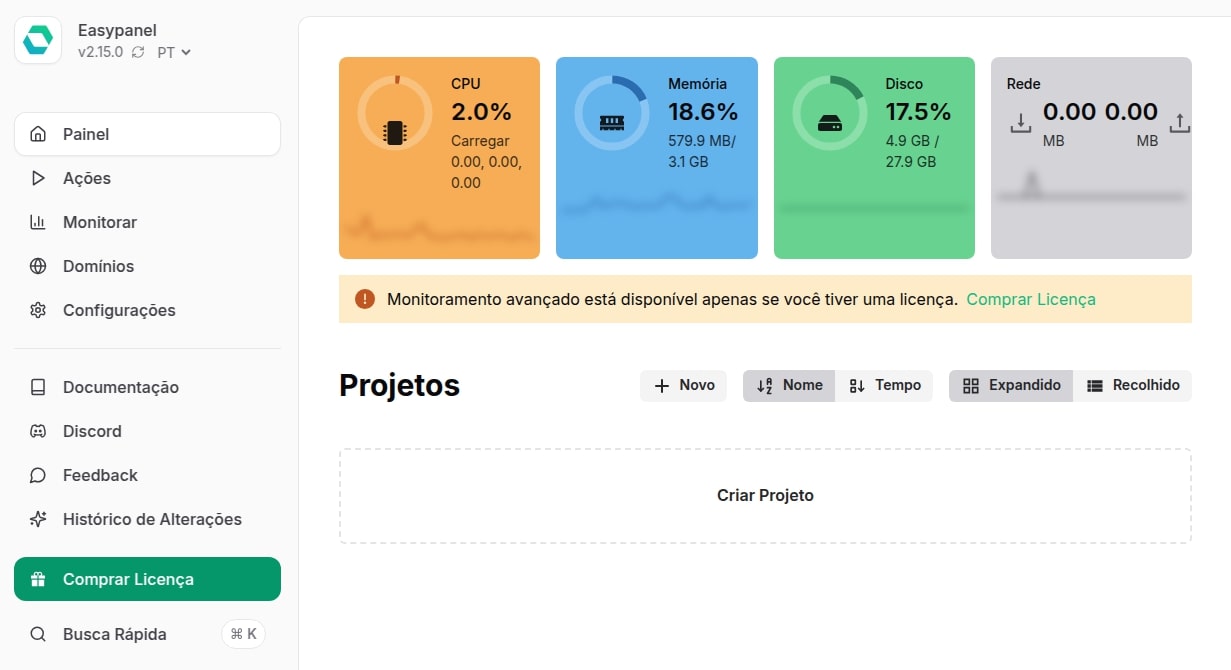How to Install EasyPanel on Ubuntu VPS
Install EasyPanel on Ubuntu VPS
EasyPanel is a lightweight and powerful control panel that lets you manage Docker containers through a clean web interface. It’s ideal for developers and sysadmins who want a simpler alternative to Portainer or complex setups.
If you’re hosting multiple apps or services on your server, EasyPanel helps you control containers, view logs, restart services, and manage deployments — all through your browser.
✅ Requirements
- A clean VPS running Ubuntu (20.04+)
- At least 4GB of RAM
- Root access (or user with
sudoprivileges)
🔒 Secure your VPS before installing
Before installing EasyPanel, we strongly recommend you secure your VPS.
Follow our VPS Hardening Guide to configure firewall, fail2ban, and other SSH protections.
🔥 Allow HTTP/HTTPS ports on firewall
If your VPS has UFW enabled, allow access to ports 80 and 443:
sudo ufw status
sudo ufw allow 80
sudo ufw allow 443
sudo ufw status
🐳 Install Docker
Run the command below to install Docker on your Ubuntu VPS:
curl -sSL https://get.docker.com | sh
🚀 Install EasyPanel
Run the following command to set up EasyPanel as a Docker container:
sudo docker run --rm -it -v /etc/easypanel:/etc/easypanel -v /var/run/docker.sock:/var/run/docker.sock:ro easypanel/easypanel setup
This will download and configure EasyPanel.
📋 Verify if EasyPanel is running
Check running containers:
sudo docker ps

🌐 Access EasyPanel from the browser
Now, go to the following URL in your browser:
http://<YOUR_VPS_IP>:3000
On the first access, you’ll be prompted to set your admin email and password.

🧭 EasyPanel Dashboard
Once logged in, you’ll see the EasyPanel dashboard where you can create apps, manage services, view logs, and more.

✅ Conclusion
With EasyPanel installed, you can now manage your Ubuntu VPS via a modern web interface using Docker containers.
It’s a great tool to streamline development, testing, or production environments for your apps.
Don’t forget to secure your panel access and enable HTTPS using a reverse proxy or the built-in SSL tools.